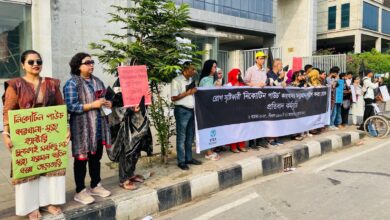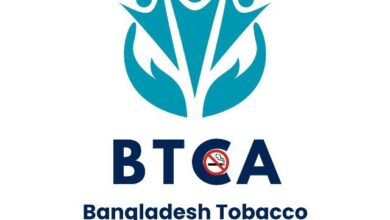Road Safety Reform: A National Call to Action

Times24.net: Every year, Bangladesh observes National Road Safety Day on 22 October to reaffirm its commitment to safer roads for all. This year’s theme — “Standard Helmet and Safe Speed: Reduce Loss of Life and Property” — calls for greater awareness and behavioral change of mass people, who remain the vulnerable in road crashes.
Globally, road crashes have emerged as one of the leading causes of death, killing nearly 1.19 million people every year, according to the World Health Organization’s Global Status Report on Road Safety 2023. That means two people die every minute and over 3,200 lives are lost daily due to preventable road incidents. Tragically, road crashes are now the top cause of death among people aged 5 to 29 years.
Bangladesh mirrors this global crisis. The Bangladesh Road Transport Authority (BRTA) reported that 5,380 people lost their lives in road crashes in 2024, making it one of the deadliest years on record. WHO data shows a rising trend over the years — 21,316 deaths in 2015, 24,944 in 2018, and 31,578 in 2021. Alarmingly, the death rate increased from 15.3 per 100,000 people in 2016 to nearly 19 per 100,000 in 2021. These figures paint a grim picture of the road safety crisis that disproportionately affects the young and working-age population.
Beyond fatalities, road crashes inflict severe injuries and disabilities on millions. Globally, 20 to 50 million people suffer non-fatal injuries every year, often resulting in lifelong disabilities. In Bangladesh, about 14 people die every day in road crashes — deaths that are entirely preventable. According to the World Health Ranking, Bangladesh ranks 106th among 183 countries most affected by road traffic fatalities. But experts believe the actual number is even higher due to underreporting, especially in rural areas where many incidents go unrecorded.
The cost of inaction on road safety extends far beyond individual tragedy. The World Bank estimates that road traffic injuries cost countries between 3% and 5% of their annual GDP. For Bangladesh, that translates into billions of dollars in productivity loss, medical expenses, and damage to property every year. Families who lose their primary earners often fall into long-term poverty, while survivors of crashes face costly treatments, rehabilitation, and loss of livelihoods. Road crashes are not only a transport problem — they are a major public health and economic development issue that hampers national progress toward achieving Sustainable Development Goals (SDGs).
Moreover, unsafe roads also discourage investments and tourism, reduce mobility, and increase transport inefficiency. A poorly regulated system affects everyone — pedestrians, cyclists, motorcyclists, and passengers alike. According to the Accident Research Institute (ARI) at BUET, more than 60% of victims are pedestrians and motorcyclists, underscoring the vulnerability of road users with limited protection.
The WHO identifies road crashes as a preventable non-communicable disease, highlighting the urgent need for policy-level reform and effective implementation. Bangladesh currently operates under the Road Transport Act 2018 and Road Transport Rules 2022, which primarily focus on transport management rather than a comprehensive safety framework. These legal instruments, while a step forward, fall short of addressing systemic road safety issues such as speed management, helmet standards, vehicle fitness, and pedestrian safety.
This legislative gap underscores the need for an integrated Road Safety Law aligned with the Safe System Approach, which considers the entire transport ecosystem — roads, vehicles, users, and post-crash response — instead of relying solely on individual responsibility. Enforcement of existing rules also remains weak. Over speeding, reckless driving, overloading of vehicles, and use of unfit vehicles continue largely unchecked. A lack of coordination among agencies — BRTA, police, city corporations, and local governments — further hinders progress.
The Safe System Approach emphasizes that human errors are inevitable, but road deaths are not. It calls for shared responsibility among all actors — government, transport operators, road users, and law enforcement — to design a system that minimizes risks. Its five pillars include safe road infrastructure, safe vehicles, safe road users, safe speeds, and effective post-crash response.
Countries that adopted this approach — including Norway, Japan, Denmark, the UAE, and Russia — successfully reduced road fatalities by 50 percent between 2010 and 2021. For instance, Sweden’s “Vision Zero” strategy treats every fatality as preventable and prioritizes system design over human blame. The result: Sweden now has one of the lowest road fatality rates in the world, just 2.1 deaths per 100,000 population. Bangladesh must learn from these examples and adapt them to its own social and infrastructural context.
In our context, that means building roads with safe pedestrian crossings, maintaining road dividers, installing speed-calming measures, and improving signage and lighting, especially on highways. It also means ensuring all vehicles meet safety standards — with proper brakes, tires, and headlights — and expanding the use of crash helmets that meet international quality benchmarks. Collaboration between government, transport associations, private sector, and civil society is essential to implement such measures.
The government’s interim reform agenda presents an opportunity to bring road safety into national policy priorities. The Eighth Five-Year Plan and SDG Target 3.6 commit to reducing road crash deaths by 25 percent by 2025 and 50 percent by 2030, in line with the UN Global Plan for the Second Decade of Action for Road Safety 2021–2030.
However, progress toward these targets remains slow. The National Road Safety Council (NRSC) — responsible for coordinating road safety programs — needs to be strengthened with better monitoring, transparent data systems, and regular reporting. Effective implementation also requires empowering local governments to design context-specific road safety interventions in cities and districts.
Achieving these goals demands strong political will, public engagement, and adequate investment in safer road systems. Road safety should be seen as a shared national priority, not merely a sectoral concern of the transport ministry. Building safer roads, modernizing public transport, and establishing trauma care centers across major highways should be part of a long-term strategic roadmap.
Youth engagement is essential in this process. As the most affected demographic, young people can play a transformative role in advocacy, awareness campaigns, and technology-driven solutions for safer roads. According to WHO data, nearly half of all road crash victims in Bangladesh are under 35 years old — meaning the youth bear the brunt of the crisis.
Integrating road safety education into schools, colleges, and universities is a critical first step. Awareness programs promoting helmet use, safe speed, seatbelt compliance, and discouraging drunk or distracted driving can help build a culture of responsibility from a young age. Student-led campaigns, digital storytelling, and community mobilization can amplify national efforts.
Innovative youth-led initiatives — such as developing mobile apps for reporting unsafe roads, volunteer-driven emergency response networks, or data-based advocacy — can bridge gaps between citizens and policymakers. Platforms like the youth networks demonstrate how collective youth voices can influence public policy and social behavior. By empowering young people with skills and knowledge, Bangladesh can foster a generation that values life and safety over speed and convenience.
Laws and infrastructure alone cannot solve the road safety crisis without behavioral change. Drivers, pedestrians, passengers, and enforcement officials must all take responsibility for safer roads. Consistent public messaging — through schools, media, workplaces, and community organizations — can shift norms and attitudes.
Wearing a helmet, fastening a seatbelt, obeying traffic signals, and avoiding phone use while driving are simple acts that save lives. Unfortunately, these behaviors remain neglected in everyday road culture. Studies show that less than 25% of motorcyclists in Bangladesh wear quality helmets, and many wear substandard ones that fail to protect against fatal injuries. Enforcing helmet standards, along with awareness about safe speed and lane discipline, must therefore be central to this year’s campaign.
On this National Road Safety Day, as we focus on standard helmets and safe speed, we must also recognize that behind every statistic lies a human story — a family broken, a dream lost. Road safety is not merely a transport issue; it is a public health, economic, and social justice concern.
Every citizen deserves the right to travel safely, whether by foot, rickshaw, motorcycle, or bus. The time to act is now — through stronger laws, safer systems, and a united commitment to protect lives on our roads. Civil society, academia, private companies, and the media must work hand in hand with the government to make “Vision Zero” — zero deaths, zero excuses — a reality for Bangladesh.
If we fail to act today, the cost will not only be measured in statistics but in the lives, potential, and prosperity we continue to lose every single day.




